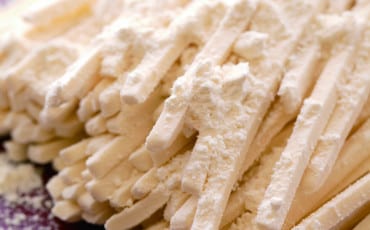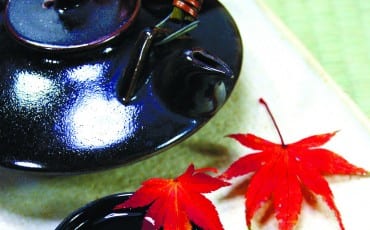Articles
Recipes
Jul 1, 2014
How to enjoy Somen: 2 Recipes for Somen
Summertime is the best time to try an array of refreshing cold dishes. And no, we don’t mean ice cream…
Summer months in Japan can get swelteringly hot and humid, and many Japanese will turn to cold dishes in order to beat the heat. One of the main summer staples is a type of cold noodles known as Somen.
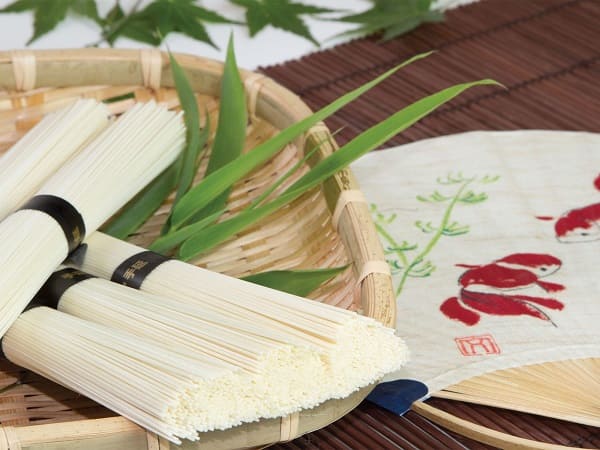
Depending on who you ask, Somen has been commercially available since the mid 1700s. However, because it was labour intensive to produce Somen, only the wealthy could afford them. In the past, the dough – which is made from wheat flour, water, and salt – would be worked and rolled over repeatedly before being coated in oil and set aside.
Once the dough has “relaxed”, the noodle maker would then use two sticks to pull at the rope of dough until it’s as thin as a thread (Somen noodles are usually less than 1.3mm in diameter), then dried. While most of the Somen available on the market these days are made with machines, some people are still willing to shell out for hand-stretched ones as they’re considered to have a better texture and taste profile.
How to enjoy Somen
Somen is a versatile ingredient that can be enjoyed in many ways. One popular way is to pair your Somen with a light-flavoured dipping sauce known as Tsuyu. You can buy ready-made sauces from any reputable Japanese supermarket, but why not try preparing your own? It’s really easy – a simple sauce includes a blend of soy sauce, fish boiled soup, and Mirin. You can also include other ingredients such as Japanese bunching onion or Myoga (Japanese ginger). Served this way, the noodles are light on the palate yet still delightfully fragrant.
Another way you can enjoy Somen is through a Somen salad, as seen in the adjacent page! While the Somen is obviously the star ingredient, the two other main ingredients include a vinegar-based sauce, and a garnish. For the garnish, you can add anything from shredded lettuce to scallions or even slivered char siu, and scrambled eggs.
Let it flow!
Probably the best way of enjoying Somen is still Nagashi-Somen (Flowing Noodles), which is usually practiced during Japan’s summer holidays . So how does this work? First, there needs to be a long bamboo flume containing clear, ice-cold running water. A server will call out, “Ikuyo!” (loosely translated as “Let’s go!”) before placing the Somen at the top of the bamboo flume. As the Somen flows past, diners would quickly pick them up with their chopsticks and dip them in Tsuyu. Several swish Japanese establishments place their Somen in real streams in order to offer guests a meal in a beautiful garden setting. In recent years, machines have been designed to simulate the Nagashi-Somen experience at home.
Somen Champuru (Fried Somen Okinawa Style)
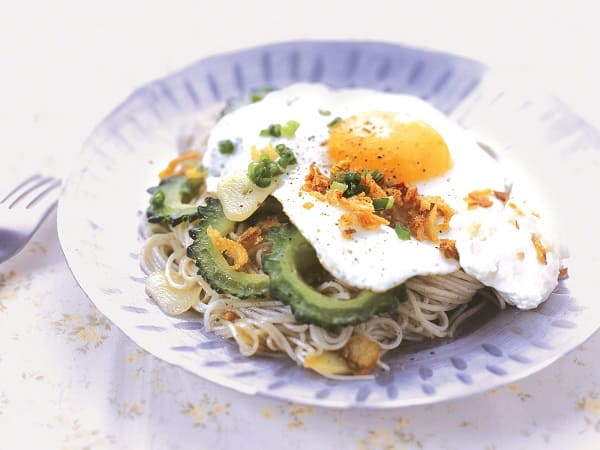
Ingredients (for 2 persons)
50g x 2 bunches Somen
Vegetable oil
1/2 clove Garlic
1/4 Bitter gourd, clean the insides then slice thinly
1/2 cube Chicken soup stock, dissolve in 3 tbs of warm water Fish sauce, for taste
2 Eggs
1 Green onion, cut small
Fried onion
Salt & pepper
Mayonnaise
Directions
1. Boil Somen for 1 minute in a pan filled with water.
2. Remove boiled Somen then wash with cold water.
3. Heat pan and add oil, then fry garlic and bitter gourd.
4. When bitter gourd gets soft, add Somen and chicken soup stock.
5. Season with fish sauce and black paper, and mix well.
6. Put them on a dish and add a fried egg, fried onion and green onion.
7. If you add more flavor, use a bit of Mayonnaise for taste.
Hiyashi Bukkake Somen (Cold soup Somen)
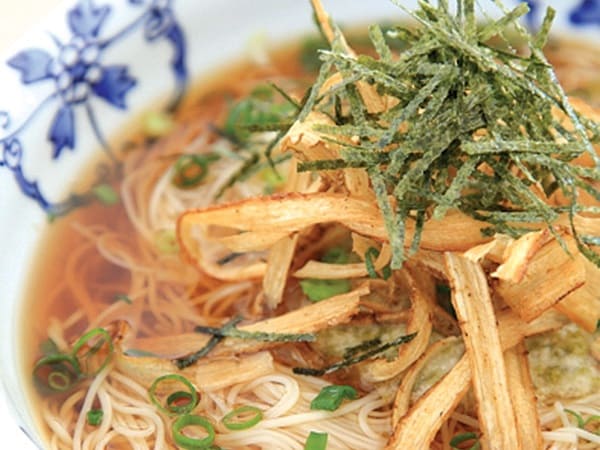
Ingredients (for 2 persons)
50g x 4 bunches Somen
700cc Mentsuyu (bottled Somen/Soba dipping sauce)
60g Yamaimo (Japanese yam)
60g Mekabu (thick seaweed), chopped finely
20cm Gobo (burdock)
Green onion, chopped
Nori (Seaweed)
Directions:
1. Chill Mentsuyu in a bowl
2. Peel Gobo skin, slice thinly and soak into water for a while. Dry it and deep fry (160c-180c) till it turns crispy and golden brown.
3. Smash Yamaimo and mix with chopped Mekabu. Add Mentsuyu for taste.
4. Boil Somen for 1.5 to 2 minutes.
5. Remove boiled Somen and wash well with cold water
6. Put Somen in a bowl with Mentsuyu, and add with Yamaimo, fried Gobo, green onion and Nori on top.
Note: If you are unable to get Mekabu, it’s replaceable with Okra (lady’s finger). Boil 2 pieces of Okra till it becomes soft, then remove seeds after opening them. Chop till it has a sticky texture.
Recipes and photos contributed by Yamaichi Co., Ltd (www.mennoyamaichi.co.jp)
TEXT: VANESSA TAI







